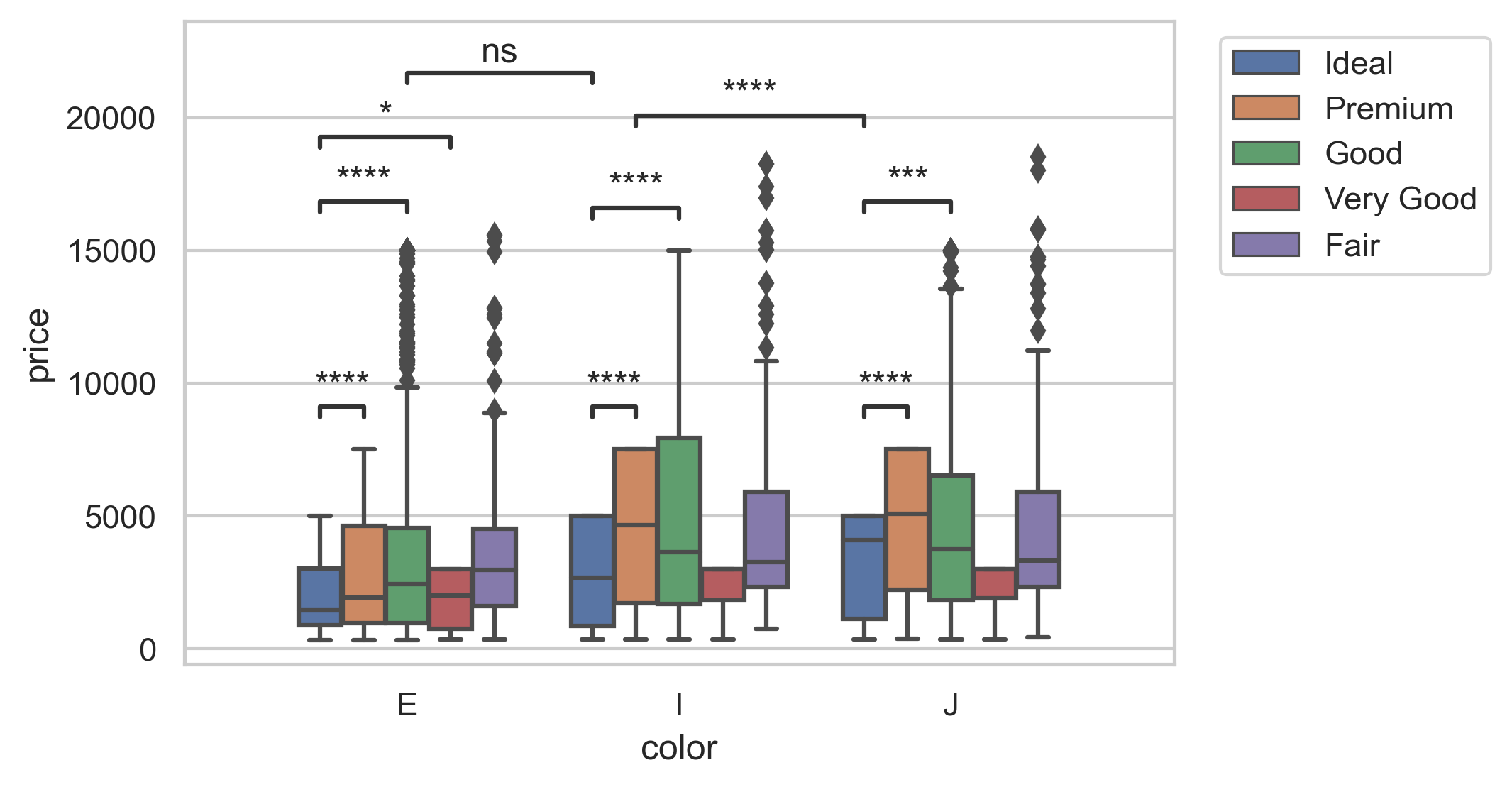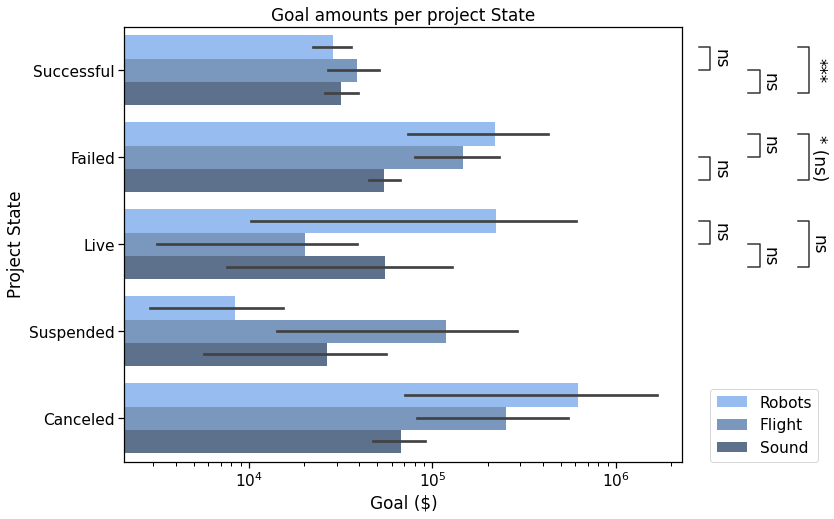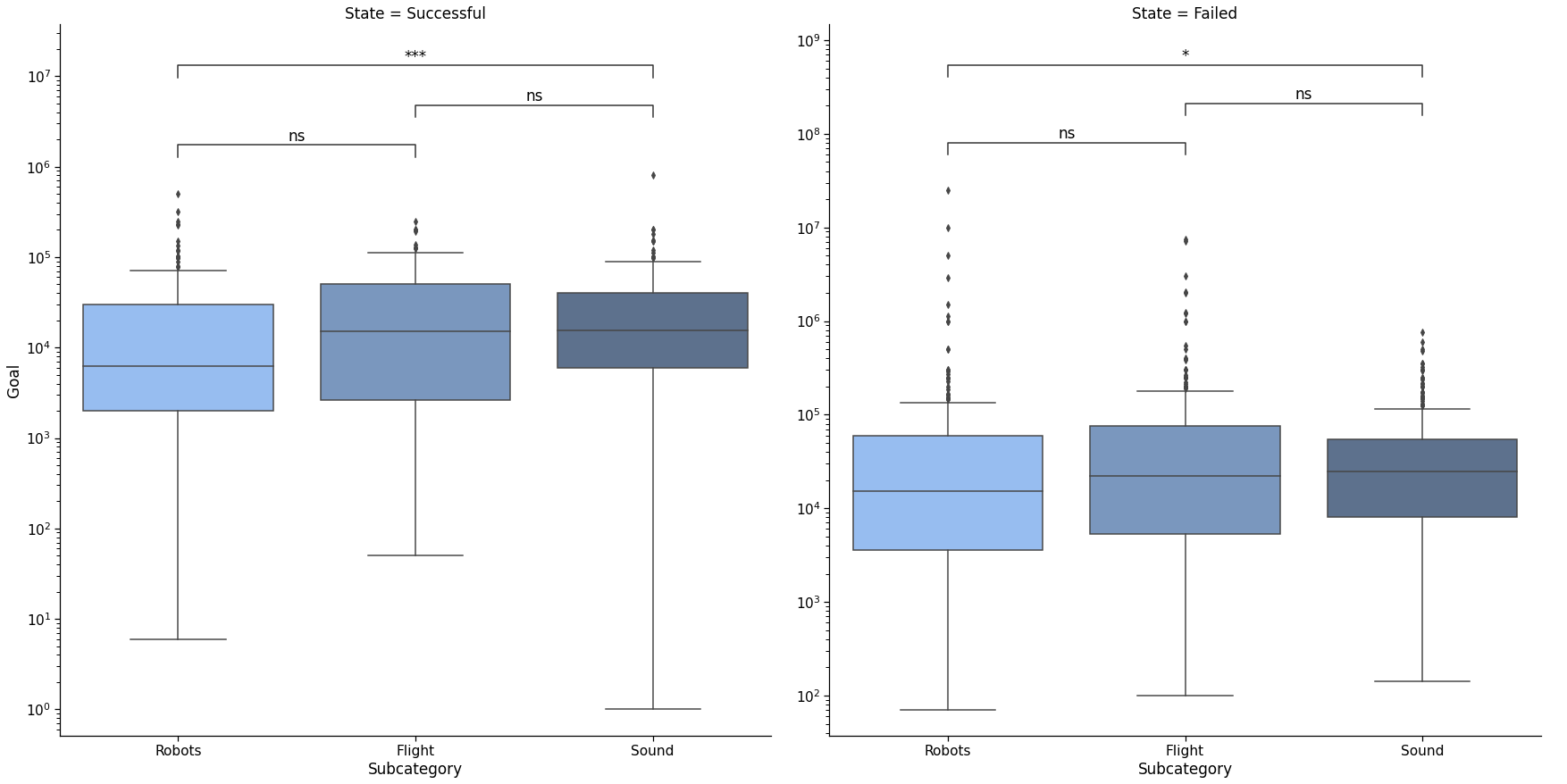Python package to optionally compute statistical test and add statistical annotations on plots generated with seaborn.
This repository is based on webermarcolivier/statannot (commit 1835078 of Feb 21, 2020, tagged "v0.2.3").
Additions/modifications since that version are below represented in bold (previous fixes are not listed).
! From version 0.4.0 onwards (introduction of Annotator), statannot's API
is no longer usable in statannotations.
Please use the latest v0.3.2 release if you must keep statannot's API in your
code, but are looking for bug fixes we have covered.
Indeed, the statannot interface, at least until its version 0.2.3, is usable in statannotations until v.0.3.x, which already provides additional features (see corresponding branch).
- Single function to add statistical annotations on plots
generated by seaborn:
- Box plots
- Bar plots
- Swarm plots
- Strip plots
- Violin plots
- Supporting
FacetGrid
- Integrated statistical tests (binding to
scipy.statsmethods):- Mann-Whitney
- t-test (independent and paired)
- Welch's t-test
- Levene test
- Wilcoxon test
- Kruskal-Wallis test
- Interface to use any other function from any source with minimal extra code
- Smart layout of multiple annotations with correct y offsets.
- Support for vertical and horizontal orientation
- Annotations can be located inside or outside the plot.
- Corrections for multiple testing can be applied
(binding to
statsmodels.stats.multitest.multipletestsmethods):- Bonferroni
- Holm-Bonferroni
- Benjamini-Hochberg
- Benjamini-Yekutieli
- And any other function from any source with minimal extra code
- Format of the statistical test annotation can be customized: star annotation, simplified p-value format, or explicit p-value.
- Optionally, custom p-values can be given as input. In this case, no statistical test is performed, but corrections for multiple testing can be applied.
- Any text can be used as annotation
- And various fixes (see CHANGELOG.md).
From version 0.3.0 on, the package is distributed on PyPi. The latest stable release (v0.4.4) can be downloaded and installed with:
pip install statannotationsor, after cloning the repository,
pip install .
# OR, to have optional dependencies too (multiple comparisons & testing)
pip install -r requirements.txt .Here is a minimal example:
import seaborn as sns
from statannotations.Annotator import Annotator
df = sns.load_dataset("tips")
x = "day"
y = "total_bill"
order = ['Sun', 'Thur', 'Fri', 'Sat']
ax = sns.boxplot(data=df, x=x, y=y, order=order)
pairs=[("Thur", "Fri"), ("Thur", "Sat"), ("Fri", "Sun")]
annotator = Annotator(ax, pairs, data=df, x=x, y=y, order=order)
annotator.configure(test='Mann-Whitney', text_format='star', loc='outside')
annotator.apply_and_annotate()- Usage examples in a jupyter notebook usage/example.ipynb,
- A multipart step-by-step tutorial in a separate repository — First part here, also as a blog post on Medium.
- In-progress sphinx documentation in
/docs, available on https://statannotations.readthedocs.io/en/latest/index.html
- Python >= 3.6
- numpy >= 1.12.1
- seaborn >= 0.9
- matplotlib >= 2.2.2
- pandas >= 0.23.0
- scipy >= 1.1.0
- statsmodels (optional, for multiple testing corrections)
Opening issues and PRs are very much welcome! (preferably in that order).
In addition to git's history, contributions to statannotations are logged in
the changelog.
If you don't know where to start, there may be a few ideas in opened issues or
discussion, or something to work for the documentation.
NB: More on CONTRIBUTING.md




